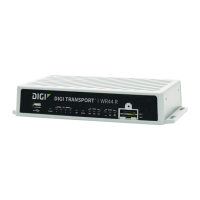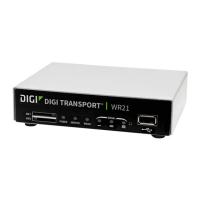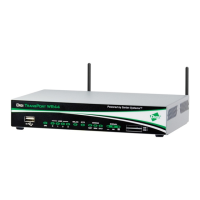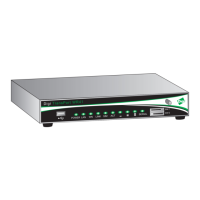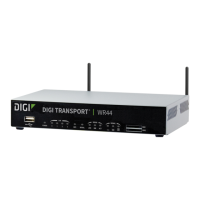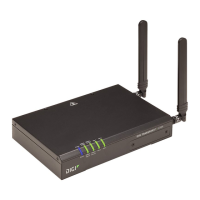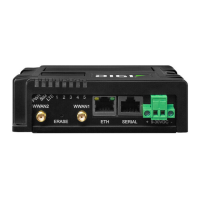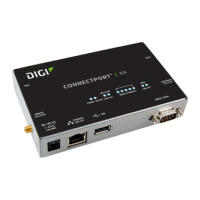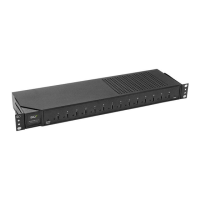Configuring network interfaces Configure Ethernet interfaces
Digi TransPort® Routers User Guide
182
Configure advanced Ethernet parameters
On routers with only one Ethernet port, there may be multiple configurable Ethernet instances.
Ethernet 0 is the physical interface. These extra instances are treated as logical Ethernet ports. You
can use them to assign more than one Ethernet IP address to a router.
On routers with more than one physical Ethernet port, the Ethernet instances refer to the different
physical Ethernet ports. These routers can be configured for either HUB mode or Port Isolate mode.
In HUB mode all the Ethernet ports are linked together and behave like an Ethernet hub or switch.
This means that the router will respond to all of its Ethernet IP addresses on all of its ports (as the
hub/ switch behavior links the ports together).
In Port Isolate mode, the router will only respond to its Ethernet 0 IP address on physical port LAN 0,
its Ethernet 1 IP address on physical port LAN 1, etc. The router will not respond to its Ethernet 1
address on port LAN 0 unless routing has been configured appropriately.
When configured for HUB mode, no more than one of the router’s Ethernet interfaces should be
connected to another hub or switch on the same physical network otherwise an Ethernet loop can
occur. The default behavior is HUB rather than Port Isolate.
ÉWeb
1. Go to Configuration - Network > Interfaces > Ethernet > ETH n > Advanced.
2. Configure the advanced Ethernet settings as needed:
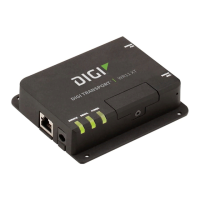
